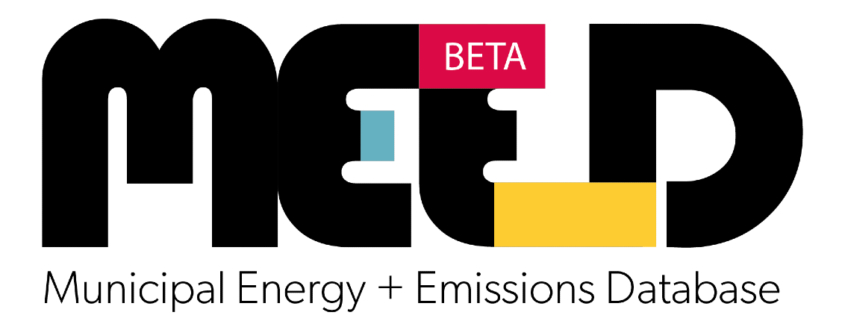Powerful Free Tool Helps Accelerate Climate Action
October 19, 2021 [Press Release] — As local-government leaders from across Canada gather online today for the annual FCM Sustainable Communities Conference, a national climate planning co-operative is offering them the information they need to kickstart climate action without paying consultants tens of thousands of dollars and waiting for many months.
As of today, every one of Canada’s 4,000+ cities, towns, and villages can access the Municipal Energy and Emissions Database (MEED) for a free community carbon-pollution profile that shows them where their greenhouse gas emissions originate and what they amount to. Once equipped with this critical info, a local government can apply for funding, or get straight to rolling out programs to regulate and/or incentivize climate solutions—such as building public EV charging stations or creating programs for building energy retrofits.
MEED is available at https://meed.info.
“Canada’s communities are on the front lines of the climate emergency, and while many of them are now responding with effective policy, many more don’t know where to start,” said Yuill Herbert, Co-founder and Principal of Sustainability Solutions Group (SSG), which developed MEED in partnership with whatIf? Technologies. “MEED is their ticket to ride. It shows them how much climate pollution their community is producing, so they can move straight to the critical work of reducing it.”
Though the lead sources of climate pollution are well known, local governments can’t design effective policy without knowing how much of it comes from where. To get those details, a municipality would typically hire a consultant to produce a custom comprehensive GHG inventory, which could cost up to $40,000 and take many months to complete.
MEED helps them cut to the chase, explains Marcus Williams, Senior Model Analyst and Principal of WhatIf? Technologies.
“Local governments have finite amounts of time, money, and expertise, and constituents and stakeholders are calling for action,” said Williams. “MEED gives them a decent snapshot of their climate pollution—it’s not meticulous but it is the crucial first step.”
—
Backgrounder: Questions and Answers About MEED
What is MEED?
MEED is an open-access database that provides a free climate-pollution profile for every community in Canada. Each profile includes a greenhouse gas (GHG) emissions inventory, a list of where the pollution is coming from, and what it adds up to.
Why is it a big deal?
MEED is revolutionary. For the first time, with a couple of keystrokes, any one of Canada’s local governments can download an accurate summary of their community’s total climate pollution and a detailed breakdown of where it is coming from.
In this respect, it puts all Canadian communities—from the biggest cities to the smallest villages—on a level playing field. A climate pollution profile would otherwise cost a local government as much as $40,000 and could take up to a year to complete. This is a barrier for some communities and a bottleneck for others. MEED gives every government what it needs to get its climate response underway.
How would a community use it?
Local governments need a greenhouse gas emissions inventory as a first step to apply for funding for incentive programs, or launch them. Three things make a MEED inventory different:
- It’s Free: MEED’s version is free, and a local government can use it to report to and/or apply for funding from, for example, the Global Covenant of Mayors, CDP, and/or the Federation of Canadian Municipalities’ Partners for Climate Protection program.
- It’s Credible: It uses a globally recognized standard—the Global Protocol for Community-Scale Greenhouse Gas Emission Inventories (GPC).
- It’s Transparent: A local government can compare its emissions with those of a similar sized community elsewhere, and do so knowing it is comparing apples to apples.
How Does it Work?
MEED pulls publicly accessible data on population, households, dwelling units, employment, weather, and known large emitters. It then compiles the data and compares it with published federal energy and emissions reports. When MEED identifies a difference between the two, it refines its calculations until the results match.
What’s the catch?
With respect to limitations, the tool currently tabulates climate pollution by sector or fuel source, and includes transportation, buildings, and stationary energy sources. (Industry and agriculture, forestry, and land use emissions are coming soon.) The tool can’t access a community’s actual measured energy consumption, so it uses estimates. In most cases, the estimates are reasonable and “ballpark good enough” to start climate action.




